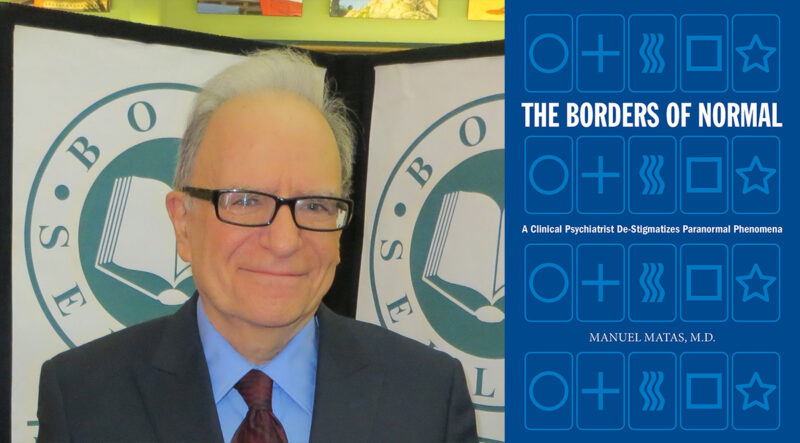A retired Winnipeg psychiatrist says he wants to destigmatize paranormal experiences.
Dr. Manuel Matas, who attended McGill and the University of Manitoba for his profession, had his first brush with the supernatural when he was 19, through a precognitive dream, and he had an out-of-body experience while he was a 23-year-old student at McGill.
His experience as a second-year psychiatry student at McGill found him floating on the ceiling one night, looking down at his body back on the bed. The day before he had gone by train with a group of residents to a conference in Halifax.
They didn’t get much sleep, and although the trip wasn’t mentally exhausting, it was physically draining.
“At the time, I didn’t even know that was possible. I had never heard anything about that, and I didn’t tell anybody about that,” the 75-year-old admitted, in an October phone conversation. “I just kind of shrugged it off and went on with my day.”
He’s used these moments, as well as a life-threatening illness, as an impetus in differentiating between the psychotic and the paranormal in his 2017 book, The Borders of Normal: A Clinical Psychiatrist De-Stigmatizes Paranormal Phenomena.
And the impetus for his book was his brush with mortality. He was diagnosed with leukemia and received a stem cell transplant 15 years after his diagnosis.
“First of all, I have nothing to lose. I wanted to talk about these experiences, which I’ve been accumulating throughout a lifetime, and occasionally I would speak with someone at a party, and we’d exchange experiences we’ve had, and like me they wouldn’t talk about them,” he recalled, adding that he started researching out-of-body, near-death or precognitive experiences.
Some of his sources for parapsychological study were the Rhine Research Center, the University of Virginia’s Division of Perceptual Studies and American psychiatrist and hypnotherapist Brian Weiss.
He continued to have experiences like the out-of-body (OBE) one, as well as precognitive dreams and started sharing them once he discovered others had them too.
“They don’t talk about them because they’re worried that they’re going crazy or they feel embarrassed or people will ridicule them, reject them,” he said.
“In Western society, it’s not really accepted because there is no rational explanation for them,” he said. “People don’t know what to make of them or process them.”
But the paranormal, in Matas’ view, is just its literal translation: the prefix para means beside and of course, normal.
“You have paramedics working beside doctors. We have paralegals working beside lawyers. We have Paralympics and so on,” he said. “Paranormal means beside normal, not abnormal.”
How Matas wants to destigmatize it is by explaining the difference between the psychic and the psychotic. He used the example of a post-death vision to illustrate his point.
“If someone is hallucinating because of a psychotic illness, they could be hallucinating every day, every minute of every day. It’s constant,” he said. “So, one distinction is the frequency.
Another distinction is the severity or nature of the visual hallucination. When it comes to the psychotic, the hallucinations are very frightening or threatening.
Neuroscientist Dr. Henrik Ehrsson, at University College London, performed a study, “First Out-of-body Experience Induced in Laboratory Setting” in 2007, which uncovered that 10 percent of the population have experienced OBEs at least once in their life.
Still, there’s a stigma in Western science when it comes to the subject of the paranormal. Especially when it comes to the spiritual side of the investigation.
One final avenue that interests Matas is post-death contact with loved ones, like that of Temple University founder Russell Conwell, who saw his deceased wife Sarah in the early 1900s.
“I think that because Western culture values science above everything else,” Matas said. “Which, of course, I value science too, but I look at it on four different levels: physical, mental, emotional and spiritual.”

